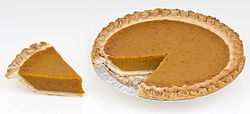Autumn
Autumn is the season after summer and before winter. In the United States and Canada, this season is also called fall. In the Northern Hemisphere, it is often said to begin with the autumnal equinox in September and end with the winter solstice in December. In the Southern Hemisphere, it runs from the autumnal equinox in March to the winter solstice in June.
In many places in the temperate zone, autumn is a time for harvesting most crops. Deciduous trees (trees that lose their leaves every year) lose their leaves, usually after turning yellow, red, or brown. In many countries, autumn is the time a new school year starts. The period of school between the start of September and the end of December is often referred to as the “Fall Semester”, “Fall Quarter”, or “Fall Term”.
When it is autumn in the Northern Hemisphere, it is spring in the Southern Hemisphere. When it is autumn in the Southern Hemisphere, it is spring in the Northern Hemisphere. On the equator, autumn is very much like spring, with little difference in temperature or in weather. Autumn is a time when most animals are looking for food so they can store up for winter, because they soon will be going into hibernation. The weather gets colder and more windy. In Autumn the hours of daylight and the hours of night are the same. In autumn the weather changes all the time. The weather turns cooler and often windy and rainy.
| Spring | Winter | ||
| The Seasons |
|||
| Summer | Autumn | ||
Autumn Media
"Jesień" (Autumn) Józef Chełmoński picture of 1875 presenting a typical view of autumn in the Polish 19th-century countryside
The annual Greenwich Village Halloween Parade in Lower Manhattan is the world's largest Halloween parade, with millions of spectators annually, and has its roots in New York City's queer community.
Autumn colouration at the Kalevanpuisto park in Pori, Finland.
Autumn foliage in Vermont, US
Pumpkin pie is commonly served on and around Thanksgiving in North America
All Saints' Day at a cemetery in Sanok, Poland—flowers and lit candles are placed to honour the memory of deceased relatives.
Falling autumn leaves in Kanagawa, Japan
Harvest straw bales in a field of Schleswig-Holstein, Germany










